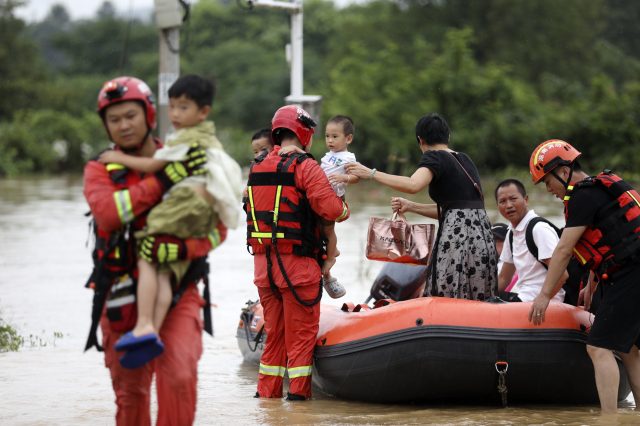In the past week, torrential rains have claimed more than 250 lives across India and China, while three others have died in Pakistan.
North Korea, near the China border, has also experienced widespread flooding, though there are no reports of casualties.
Asia is amid monsoon and typhoon season, and climate change has intensified these storms. The heavy rains have caused landslides, flooding, and widespread devastation, impacting crops, destroying homes, and claiming lives.
Historical data shows that China is experiencing more extremely hot days and more frequent intense rains, according to a report released last month by the China Meteorological Administration, which forecasts more of both in the coming 30 years.
Governments have launched disaster prevention plans to try to mitigate the damage. Rescue teams scramble to evacuate people ahead of approaching storms and deliver relief goods by helicopter to cut-off areas. China has deployed drones for emergency communication in rain-prone provinces.
Sometimes it isn’t enough, as the tragic consequences playing out in Asia show.
Heavy rains sent torrents of mud and water through tea estates and villages in Kerala state in southern India early Tuesday, destroying bridges and flattening houses.
Hope of finding survivors has waned as the search entered its fourth day. Bodies have been found as far as 30 kilometers (20 miles) downriver from the main landslides.
The area is known for its picturesque tea and cardamom estates, with hundreds of plantation workers living in nearby temporary shelters. “This was a very beautiful place,” a shopkeeper said. “I used to visit here many times. … Now there is nothing left.”
India regularly experiences severe floods during the monsoon season, which runs from June to September and brings rain that is crucial for crops.
Typhoon Gaemi was blamed for more than 30 deaths in the Philippines and 10 in Taiwan as it churned through the western Pacific last week. It remained fatal after weakening to a tropical storm in China.
Rain drenched parts of inland Hunan province for several days. On Sunday morning, a mudslide slammed into a homestay house in a popular weekend spot, killing 15 people.
Elsewhere in Hunan, the bodies of three people were found on Monday, believed to be victims of another landslide.
Authorities in nearby Zixing city announced Thursday that 30 people had died in floods, with 35 others missing.
One other death in China was apparently tied to the storm: a delivery driver on a scooter was struck by falling tree branches during high winds in Shanghai.
China has recorded 25 major floods this year, the most since it began keeping statistics in 1998, the Ministry of Water Resources said this week.
The tropical storm also generated heavy rain in northeast China on the border with North Korea, overflowing the Yalu River, which divides the two countries.
In North Korea, the rain flooded 4,100 houses, 3,000 hectares (7,400 acres) of farmland, and many public buildings, roads, and railways.
State media did not provide information on deaths, though the nation’s leader Kim Jong Un implied there were casualties when he was quoted blaming public officials who had neglected disaster prevention, causing “the casualty that cannot be allowed.”
Military helicopters, the navy, and other government boats evacuated stranded residents. State TV aired footage showing Kim and other officials riding in rubber boats to examine the scale of the damage. The footage showed houses submerged in muddy waters with only their roofs visible.
On the Chinese side, state television showed excavators in rushing water trying to clear debris after a mudslide in Jilin province. One city near North Korea asked residents living below the third floor to move to higher ground as the Yalu River rose.
In Dandong, a large Chinese city along the river, rescuers evacuated residents in rubber dinghies on streets turned into virtual lakes. There were no reports of deaths.
Record rainfall in the city of Lahore flooded streets and left at least three people dead in Pakistan on Thursday. The deaths at the start of August came on top of 99 rain-related fatalities the previous month.
Some parts of Lahore recorded 353 millimeters (14 inches) of rain in a few hours, breaking a 44-year-old record. The rain was so heavy that it entered some hospital wards in the capital of Punjab province.
The victims included two children: one drowned in a flooded street and another fell from the roof of her house.






